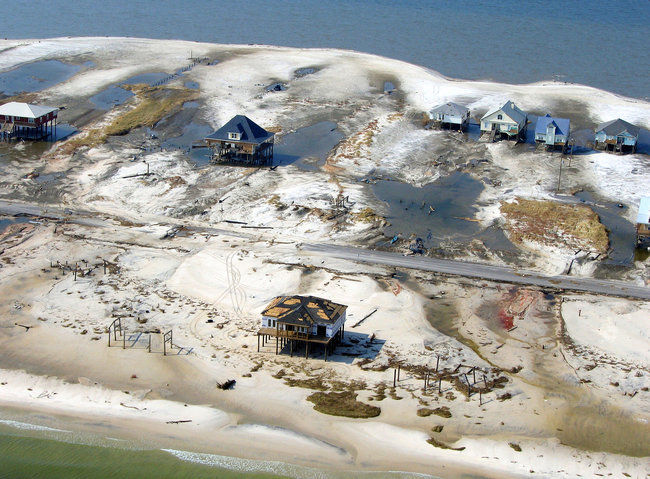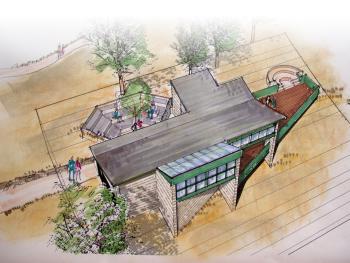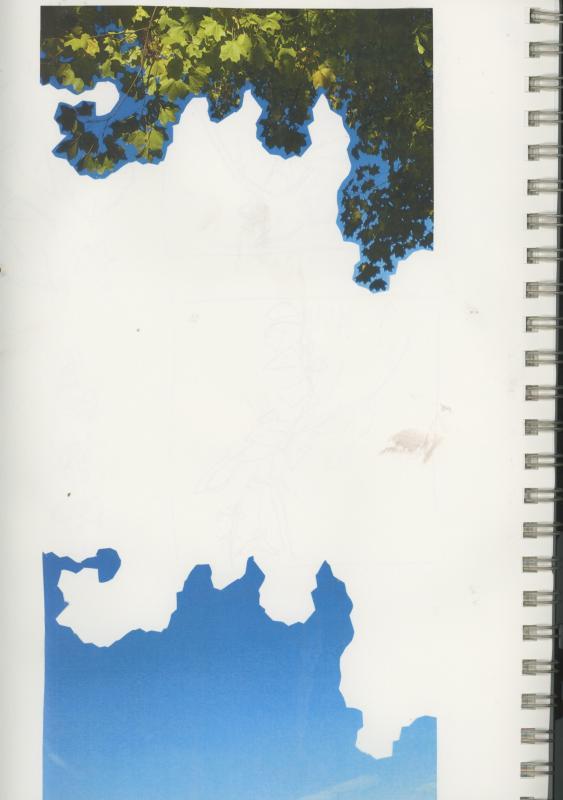Serendip is an independent site partnering with faculty at multiple colleges and universities around the world. Happy exploring!
Blogs

Finding the self in walled communities
This is Sharon Wiggins, a lifer who we were told by some of the women in the Cannery has now been released. This photo by Howard Zehr really captured my attention, and made me question how incarcerated men and women adapt to, and are even able to do introspective reflection in their prison environments. 
Easy Like Sunday Morning...A Geological/Botanical Tour
Three freshmen from Anne's ESem, Max and I begain our ramble around 10:13am on Sunday morning. I know Max and I didn't discuss planning anything out for the trip and I don't think the freshmen did either.
We started walking toward Taylor Hall from Erdman to start the geological tour, but Max thought that, since we were by her site sit, we should stop by and look at some of the plant life around there. She pointed out the English Ivy and a beech tree and we discussed whether or not we thought this one plant was a weed. Stemming from that last topic, we talked a bit about what we thought weeds were and Max cited the definition that we came up with on our botanical tour that "a weed is something that is not where it is supposed to be and doens't want to leave" (please correct me if that is wrong).
We paused here for a bit longer to discuss what had and what had not been helpful to us in class thus far. The freshmen each cited the amount of writing that is required in their ESem as helpful to improving that skill for them, though they are becoming a bit tired of the repetition. We compared the location of class between our two classes. The ESem holds class in a different location each day and that location is chosen by a different student (the same way we chose whether to be outside or not). We told them about our system and compared the merits and distractions of both strategies. One thing that stood out for me was that, althought the freshmen enjoyed getting to know a new location each day, they di

Rebuilding after Disaster: What makes "sense"?
I'm having a weather-conscious Monday: 2 things happened.
#1. At breakfast, I saw an article on the front page of the Times, "As Coasts Rebuild and U.S. Pays, Repeatedly, the Critics Ask Why." The title pretty much sums up the article - What are we going to learn from Sandy & other weather events? Are we being financially and/or ecologically responsible? (short answer: no.)

- the federal government spends TONS of money on rebuilding coastal properties (one example was Dauphin Island): "Tax money will go toward putting things back as they were, essentially duplicating the vulnerability that existed before the hurricane…. At least $80 million, adjusted for inflation, has gone into patching up this one island since 1979 — more than $60,000 for every permanent resident. That does not include payments of $72 million to homeowners from the highly subsidized federal flood insurance program."

Next Steps (towards a final field trip)
What (I think!) emerged in today's discussion was a shared desire for a final field trip that (in graham's words) "lets our discussion become mobile." We seem to be moving towards a walk along Mill Creek. Below find what Lynne Elkins, of the BMC Geology Department, said when I asked her for guidance on how to do this "ramble."
In reponse to her questions: what is our purpose here? Shall we go to Ashbridge Park, to Mill Creek (in the acreage below Harriton House), or to Dove Lake? Rambling and talking together about a text? What is an "ecological" mode for making such a decision? How to be "ecologically conscious" in doing so?
....we do local trips very often, sometimes nearly every week for particular classes. I use Mill Creek for at least one class every semester. I agree that walking along it isn't feasible--in some places the banks are too overgrown, and in others it's probably private property or the stream enters underground drainages. You could walk farther by going through the water with waders, but in places storms have deposited enough debris that it might be impassible. I've never used it as far as Dove Lake, though.
My recommendations/ideas will really depend on the purpose of using a field site for this class. What kinds of observations are your class hoping to make? Will you take any measurements or do any analysis? Environmental studies/ecology is a bit too broad to be sure what would be best.

Vision Memo 2
As I said before, I really loved Zer's talk about close-up vs. bird's eye view. I wrote this paper on how this frame can be used to think about ways in which we define our identities based on the institutions that we are part of.


hibernating
Nov. 1...
"I need hibernation in order to create" - Terry Tempest Williams (p.58)
Nov. 8

Nov. 15

thoughts from today
It was interesting for me to hear Sruthi’s and Ursula Le Guin’s ideas on boundless love. These two things made me think of quotes/stories that were seared into my memory in high school. The first is from an essay that my older sister wrote about bare feet. She wrote: “I don’t know if it’s possible to measure a thing like love, but the two people in this world who I care for most fiercely are my younger brother and sister.”

Botany Tour
I know this is a little bit early, but I wanted to tell everybody about the botanical tour that Hannah, Rochelle, Rachel, Graham and I went on this past weekend. Our tour began in Morris Woods behind the English house, where Rachel and Graham showed us a plant that mimicked other native plants in its surroundings in order to survive. I don't recall its name, but I've been calling it the "Chameleon" Plant (like in my recent Serendip post, for example). The Chameleon plant had a distinct burning tar smell (as Rachel described it), which distinguished it from a neighboring plant which looked almost exactly the same, but smelled more like "green peppers". Another plant nearby also had similar leaves, but had a more lemon or citrus smell to it. A yue tree was next on our botany tour; Rachel and Graham told us that it was very poisonous, and that we should probably wash our hands after touching it. We quickly moved on to a Beech Tree, which several Bryn Mawr students had carved into. Rachel commented on this, explaining that Beech wood couldn't be used for very much because it was a weaker type of wood. Both explained that they had played a game outin Morris, where students had to close their eyes and try to identify trees. The comment led me to believe that their class may be a little more environmentally based than our seminar, even though we both have been doing similar readings and discussion exercises in class.

The "Chameleon" Plant
Fall is my favorite time of the year. The brevity of the transition between Summer and Winter leaves something for want, and I find that my longest walks are during those crisp, scarf weather autumn days. Today, I will not be writing about my usual spot out behind Rhoades, but instead will be remembering a walk into the woods that I took after having the "botanical" tour with Rachel and Graham. At one point, I remembered that they had showed my group a plant that mimicked native species in order to survive. The three plants that they showed us looked almost exactly the same, but had three distinct smells that distinguished them from one another. This "chameleon" plant was thriving in the forest, even though it wasn't native to the area. As I returned to this site after out tour, I began thinking about how the human race has adapted ecologically to our environment--and how our reaction to our natural surroundings couldn't be more opposite to that of the "chameleon" plant. Would we have been better off if we had taken a similar approach? Instead of destroying and abusing our natural surroundings, what if we could have mimicked them? If this were the case, there certainly wouldn't be the problem of the green-house effect (at least on a large scale), no oil spills--pollution would be eliminated to almost nothing. If we were like the "chameleon" plant, we would have learned from nature in order to thrive and still be able to compete for resources. How could we have done this?


